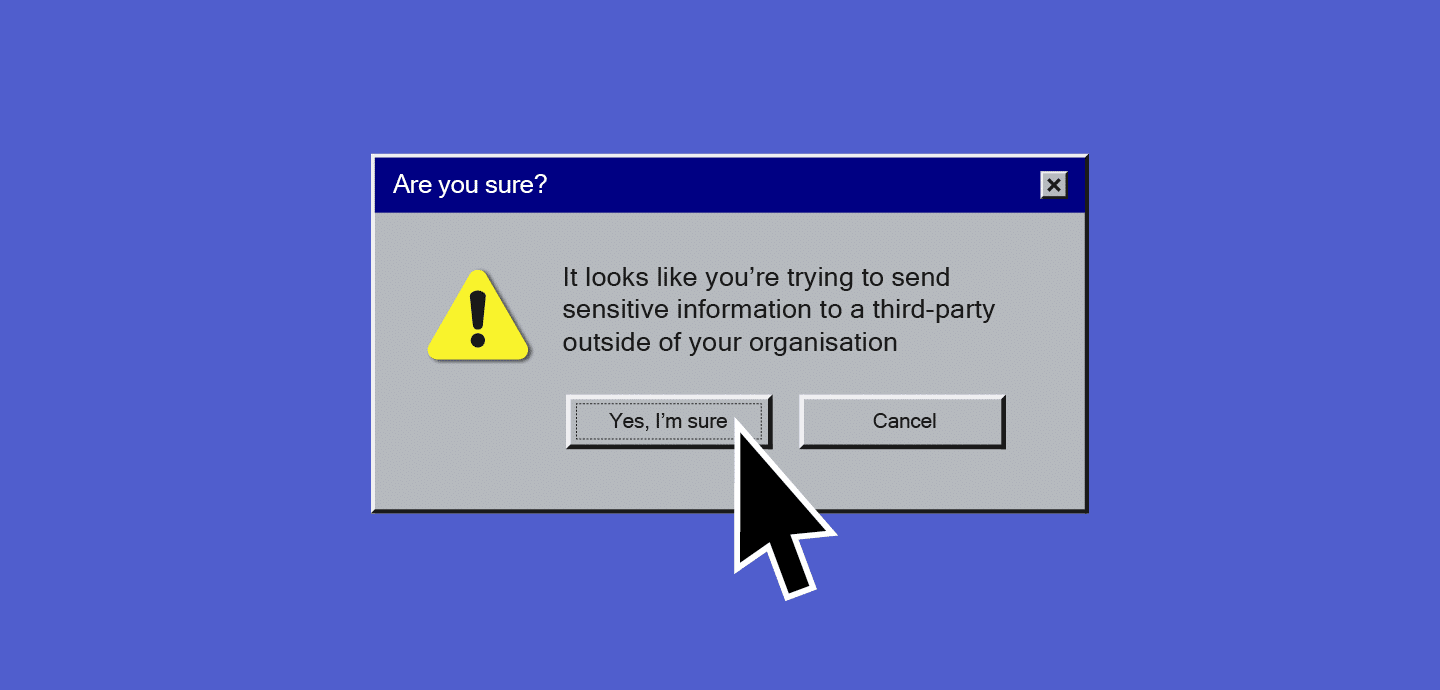
Best Practices for a Successful Zero Trust Security Implementation
Introduction to Zero Trust Security Implementation
Zero Trust Security (ZTS) is a strategic cybersecurity approach that fundamentally eliminates the concept of trust from an organisation's network architecture. Its primary purpose is to safeguard modern digital environments by leveraging network segmentation, preventing lateral movement, providing Layer 7 threat prevention, and simplifying granular user-access control1.
Implementing ZTS can yield significant benefits. It enhances data security by minimising data breach risks through strict access controls and continuous verification of user credentials. It also offers enhanced visibility into user activities, enabling real-time analytics and threat response. Furthermore, it bolsters regulatory compliance by providing detailed user activity logs and reports2.
However, ZTS implementation can present challenges. It requires a significant shift in organisational culture and security strategies, which can be complex and necessitate buy-in from all organisational levels. Substantial changes to existing network infrastructure may be required, which can be costly and time-consuming. Lastly, achieving comprehensive visibility and control over all network connections can be technically challenging, especially in complex environments.
Understanding the Core Components of Zero Trust Security
Zero Trust Security, a strategic cybersecurity approach, operates on the principle of trust no one, verify everything3. It's built on several core components, each playing a unique role in enhancing the overall security posture.
Identity and Access Management (IAM) ensures only verified users and devices gain access to resources, employing multi-factor authentication and continuous monitoring. Micro-segmentation divides the network into isolated segments, limiting lateral movement of potential threats. Least Privilege Access grants users and devices the minimum level of access needed, reducing potential damage in case of a breach.
Continuous Monitoring and Analytics provide real-time insights into network activity, enabling prompt detection and response to threats. Understanding these components is crucial for designing a comprehensive Zero Trust Security framework tailored to the organisation's unique needs4. It enables identification of potential vulnerabilities, planning for contingencies, and ensuring all security layers work in harmony. This understanding also facilitates the education of employees about their roles in maintaining security, fostering a culture of shared responsibility.
Planning for a Successful Zero Trust Security Implementation
Planning for a successful Zero Trust Security (ZTS) implementation involves several key steps. First, identify sensitive data and its location to determine the necessary level of protection. Next, map transaction flows to identify potential vulnerabilities and areas requiring additional security measures.
Implementing least-privilege access is crucial, granting users only the access they need, thereby reducing the risk of unauthorised access and potential data breaches. Inspecting and logging all traffic5 is essential for maintaining visibility and control over your network, enabling prompt detection and response to suspicious activities.
Consider the associated risks and opportunities while planning for ZTS implementation. Risks include potential operational disruption during implementation and user pushback due to perceived inconvenience. However, the opportunities, such as enhanced security, reduced data breach risk, and improved compliance with regulations, are significant.
Understanding the core components of ZTS, including network segmentation, user identity verification, device security checks, and system health checks, aids in effective planning. This understanding allows you to design an implementation plan tailored to your organisation's specific needs and vulnerabilities, ensuring a comprehensive and effective ZTS implementation.
Best Practices for Implementing Zero Trust Security
Implementing Zero Trust Security (ZTS) necessitates a strategic approach. Begin by understanding your network, identifying sensitive data, its flow, and access requirements6. This forms the foundation for creating effective policies and controls. Adopt a least privilege access strategy, granting users only the minimum necessary access based on their roles and responsibilities. Regularly review and adjust these privileges to prevent privilege creep.
Micro-segmentation is crucial in limiting the lateral movement of threats. Divide your network into secure zones, isolating critical assets and data from potential breaches. Enhance security by implementing multi-factor authentication (MFA) and identity and access management (IAM) tools. MFA adds an extra layer of verification, while IAM ensures proper user authentication and access control7.
Avoid common mistakes such as rushing the implementation or neglecting training. ZTS is not a one-size-fits-all solution, so customise it to fit your organisation's specific needs and requirements. Effective planning, understanding your current security posture, setting realistic goals, and allocating resources efficiently contribute to successful implementation. Regularly monitor and update your ZTS strategy to stay ahead of evolving threats.
Measuring the Effectiveness of Your Zero Trust Security Implementation
To measure the effectiveness of a Zero Trust Security (ZTS) implementation, key metrics such as Reduction in Security Incidents, User Behaviour Analytics (UBA), Network Traffic Analysis (NTA), Security Incident Response Time, and Compliance with Policies are crucial. A decrease in security incidents signifies a successful ZTS implementation. UBA and NTA facilitate the detection of potential threats by monitoring user behaviour and network traffic. A shorter response time to security incidents indicates an efficient ZTS model, while regular audits ensure adherence to ZTS policies.
These metrics align with best practices such as Least-Privilege Access, Micro-Segmentation, and Continuous Monitoring8. Least-privilege access minimises the attack surface, while micro-segmentation prevents lateral movement of threats. Continuous monitoring enables real-time threat detection and response. Regular tracking and analysis of these metrics can identify areas for improvement, refine the ZTS strategy, and maintain a robust security posture.
Overcoming Challenges in Zero Trust Security Implementation
Implementing Zero Trust Security (ZTS) often presents challenges such as complexity in design, potential performance impact, resistance to change, and budget constraints9. A phased approach, starting with critical assets and gradually extending to less critical ones, can reduce complexity and allow for manageable budget allocation.
Investing in training and hiring skilled personnel is crucial to navigate ZTS complexities. Fostering a security-conscious culture can further help reduce resistance to change. Automation can simplify complex ZTS architectures, thereby reducing the burden on IT teams.
Before implementing ZTS, ensure your infrastructure can handle the additional load. Conduct thorough testing to identify and rectify any issues that may disrupt operations.
Measuring the effectiveness of ZTS implementation is vital in identifying and overcoming challenges. Regular audits and reviews provide insights into system performance and areas for improvement. Key metrics such as the number of prevented breaches, system uptime, and user compliance levels help validate the effectiveness of the system10. Regular penetration testing ensures the robustness of the ZTS implementation.
Ensuring Continuous Improvement in Zero Trust Security Implementation
Maintaining and improving Zero Trust Security (ZTS) necessitates a proactive, iterative approach11. Best practices encompass continuous monitoring of network activity, regular updates to security policies, and consistent user education.
To ensure continuous improvement, regular audits of the ZTS framework are crucial. These audits should review access controls, verify the efficacy of security policies, and update them as necessary. The incorporation of AI and machine learning can aid in detecting anomalies and improving response times.
Overcoming challenges in ZTS implementation, such as managing user access, securing IoT devices, and integrating legacy systems, contributes to continuous improvement by identifying weaknesses and areas for enhancement. These challenges can be addressed through a combination of technology, policy, and training.
Resistance to change can be mitigated through effective communication and training, fostering a security-conscious culture. Budget constraints can lead to innovative cost-effective solutions, enhancing the organisation's ability to maintain ZTS with limited resources.
Regular training and awareness programs for employees are crucial. By educating staff on ZTS principles and potential security threats, organisations can enhance their security posture and reduce the likelihood of human error12.
The Role of Network Security Management in Zero Trust Security
Network security management is a critical component in implementing Zero Trust Security (ZTS), a model that operates on the principle of "never trust, always verify."13 Key considerations include the identification and classification of data, continuous monitoring of network traffic, and the implementation of least privilege access. These measures ensure that every access request is verified, authenticated, and securely logged, aligning with the ZTS principle.
Network security management contributes to ZTS by providing a robust framework for continuous verification. It facilitates the identification and mitigation of potential vulnerabilities, thereby reducing the attack surface. It also enables real-time visibility into network activities, crucial for detecting and responding to security incidents promptly.
Continuous improvement impacts network security management by necessitating regular updates and upgrades to security controls, policies, and procedures. This iterative process helps to keep pace with evolving cyber threats and enhances the overall effectiveness of the ZTS framework.14 It also fosters a proactive security culture, key to maintaining a robust and resilient network environment.
The Importance of Information Transfer in Zero Trust Security
Secure information transfer is a cornerstone of Zero Trust Security (ZTS), with key considerations including data encryption, secure protocols, and least-privilege access control. Data encryption15, using robust protocols like AES or RSA, ensures data confidentiality and integrity during transmission. Secure protocols such as HTTPS or SFTP provide encrypted communication channels, safeguarding data from unauthorised access. Least-privilege access control minimises the risk of unauthorised access or data leakage by granting access only to authenticated and authorised users.
Effective information transfer is vital for successful ZTS implementation, facilitating real-time sharing of security incidents and threat intelligence among systems. This reinforces the ZTS principle of "never trust, always verify," enhancing overall security posture and compliance with regulatory requirements.
Network security management significantly impacts information transfer in ZTS. It involves monitoring network traffic, controlling data access, and implementing security policies. Measures such as setting up firewalls and intrusion detection systems, coupled with regular security audits, ensure only authorised entities can access and transfer data, thereby minimising the risk of data breaches.
Technical Vulnerability Management in Zero Trust Security
Technical Vulnerability Management (TVM) is a crucial component of Zero Trust Security (ZTS), playing a pivotal role in maintaining a robust security posture16. It involves a systematic process of identifying, evaluating, treating, and reporting on security vulnerabilities in systems and software.
Key considerations for TVM in ZTS include regular vulnerability scanning, prioritising vulnerabilities based on their severity and criticality, and promptly applying patches to mitigate high-risk vulnerabilities. Continuous monitoring for new vulnerabilities and patches is essential to stay ahead of emerging threats.
TVM significantly contributes to a successful ZTS implementation by minimising the attack surface and reducing the chances of a breach. This aligns with the ZTS principle of 'never trust, always verify', ensuring no vulnerability is left unaddressed.
Information transfer, as discussed in 'The Importance of Information Transfer in Zero Trust Security', impacts TVM by enabling a coordinated response to vulnerabilities. Secure and timely sharing of vulnerability data across systems and stakeholders is crucial. This includes using encryption and secure protocols for data transmission, implementing secure communication channels for sharing vulnerability information, and securely storing vulnerability data to prevent unauthorised access.
Auditing Your Zero Trust Security Implementation
Auditing a Zero Trust Security (ZTS) implementation is a critical process, ensuring its effectiveness and reliability. It involves a comprehensive examination of the system's security controls, policies, and procedures. Key considerations include verifying access controls, enforcing least privilege access, validating network segmentation, and monitoring network traffic.
Regular audits play a pivotal role in maintaining the effectiveness of ZTS. They help identify deviations from ZTS principles, detect potential security threats, and assess the system's response to these threats. By identifying and addressing these issues, audits enable timely corrective actions, enhancing the system's security.
Technical vulnerability management is integral to the audit process. It involves identifying, evaluating, treating, and reporting on security vulnerabilities in systems and software. Regular vulnerability assessments and penetration testing provide valuable insights into potential security gaps in the system. These findings aid auditors in evaluating the system's resilience against cyber threats, contributing to an effective audit process.
Auditing ensures the adherence to ZTS principles and identifies any potential vulnerabilities or breaches. It verifies the proper functioning of security controls, such as multi-factor authentication, encryption, and micro-segmentation. Audits also assess the system's ability to detect and respond to security incidents, ensuring the ongoing effectiveness of ZTS.
Ensuring a Successful Zero Trust Security Implementation
Implementing Zero Trust Security (ZTS) is a strategic move towards robust cybersecurity, underpinned by the principle of "never trust, always verify." Key elements for successful implementation include thorough planning, continuous monitoring, and the incorporation of least privilege access.
Auditing's Role in ZTS Implementation
Auditing is instrumental in the success of ZTS, providing visibility into user activities, system interactions, and data flows. Regular audits help identify vulnerabilities, ensure policy compliance, and detect anomalous behaviour, thereby fortifying the security stance.
Post-Implementation Steps
After implementing ZTS, continuous assessment and enhancement are vital. This involves regular audits, prompt patching, updates, and employee training to adapt to the new security model. It's crucial to stay informed about evolving cyber threats and adjust the ZTS strategy accordingly. Remember, ZTS is not a one-off project but a long-term commitment to proactive cybersecurity.
In essence, successful ZTS implementation requires a comprehensive understanding of the organisation's IT infrastructure, data flows, and user behaviours, coupled with a commitment to continuous improvement and adaptation to the ever-evolving threat landscape.
Citations
- 1: What is a Zero Trust Architecture – https://www.paloaltonetworks.com/cyberpedia/what-is-a-zero-trust-architecture
- 2: Top 5 Regulatory Reasons for Implementing Zero Trust – https://www.csoonline.com/article/573985/top-5-regulatory-reasons-for-implementing-zero-trust.html
- 3: What is Zero Trust Security? Principles of the … – https://www.crowdstrike.com/cybersecurity-101/zero-trust-security/
- 4: Secure data with Zero Trust – https://learn.microsoft.com/en-us/security/zero-trust/deploy/data
- 5: The Importance of Continuous Monitoring in a Zero-Trust … – https://ts2.space/en/the-importance-of-continuous-monitoring-in-a-zero-trust-security-model/
- 6: The Smart Approach To Implementing Zero-Trust Security – https://www.forbes.com/sites/forbestechcouncil/2021/11/08/the-smart-approach-to-implementing-zero-trust-security-building-to-sase/
- 7: How to Measure Zero Trust Security Effectiveness – https://www.linkedin.com/advice/0/how-do-you-measure-effectiveness-zero-trust
- 8: How effective is security awareness training? – https://blog.usecure.io/does-security-awareness-training-work
- 9: Continuous Improvement in Security Performance … – https://www.bitsight.com/blog/importance-continuous-improvement-security-performance-management
- 10: Zero Trust Security – https://www.encryptionconsulting.com/education-center/zero-trust-security/
- 11: How Does Network Security Fit into Zero Trust? – https://www.akamai.com/glossary/how-does-network-security-fit-into-zero-trust
- 12: Understanding the Zero Trust Model and Its Role in … – https://www.secopsolution.com/blog/zero-trust-model-and-vulnerability-management
- 13: Vulnerability Management: The Backbone of a Zero Trust … – https://static.fortra.com/beyond-security/pdf/guides/be-vm-the-backbone-of-a-zero-trust-strategy-gd.pdf
- 14: How Auditors Fit into the Zero Trust Journey – https://www.isaca.org/resources/news-and-trends/isaca-now-blog/2022/how-auditors-fit-into-the-zero-trust-journey
- 15: Vulnerability Assessment and Penetration Testing (VAPT) – https://www.getastra.com/blog/security-audit/what-is-vapt/
- 16: How internal audit can demonstrate success – https://www.grantthornton.co.uk/insights/how-internal-audit-can-demonstrate-success/




